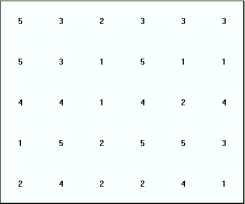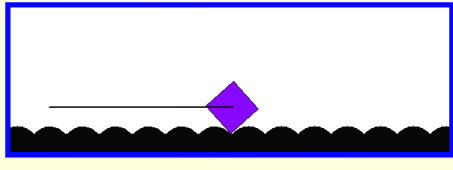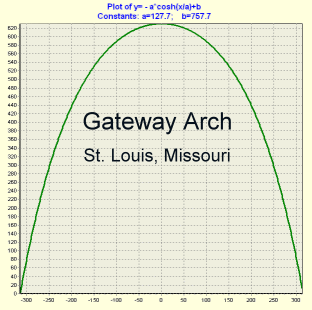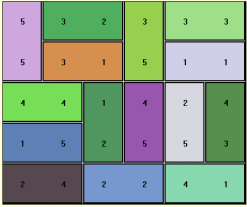What's New - March, 2007
[Home]
March 22, 2007:
 |
1-1 |
|
The outlines have been removed from a set of dominoes which exactly fill a rectangular board. Given a list of the dominoes removed, your task is to figure out where they belong on the board. Here's the Domino Puzzle program for you to give it a try.
March 15, 2007: Here's a quickie; an example of how much dumber are computers than humans. Or, more accurately, how difficult it is to make a program (e.g. a Delphi control) emulate human behavior. Combine this with a user (me) making the error of setting parameters in the wrong order and we have discovered yet another way to create a "bug"
A program called Allwords, on the Beginner's page in our Delphi Techniques section takes user input words and outputs all unique permutations of the letters in the range from 1 to word-length. The control which specifies the maximum number of letters to permute is a TUpDown "spinner" control which has properties Position (the current value and the one which the user can change) and Max (the largest value which may be set). For each letter entered, I wanted to set both Position and Max to that new word-length value. For the first letter, all is well, but.... when the next letter is entered and I try set Position to "2" (greater than Max value of "1"), the command is ignored without any warning! When I then set Max to Position, thinking that Position has just been changed, neither value has changed and the maximum number of letters to permute stays stuck at 1 regardless of the length of the word entered. The fix is easy, just set Max before Position and all works as intended.
March 14, 2007:

One of my standard problem solving techniques is "Divide and Conquer". If you can solve one piece of a large problem, you have not only reduced the size of the larger problem, but have gotten the psychological boost of having completed something as a bonus! Here is Test Draw Rods, a program posted in the Delphi Techniques section, which contains classes to draw cylinders that are divided into segments with their length's labeled. The components will be used to display results of a forthcoming program which solves the Cutting Stock Problem (look it up :>).
March 10, 2007: Due to popular demand (3 requests this year :>), I finally added a "Donate" button to the website. I tried to test it by donating $5, but PayPal doesn't like the idea of donating to yourself. So if anyone happens to try it in the next week or so and encounters any problems, please use the feedback link at the top of this page to let me know. Thanks.
March 7, 2007: Happy Birthday to me! 68 today and still kicking! Good family, good food, good books, a good computer, even good weather. Life is good.

Last week's Scigrapher update led to another catenary related program today in our Math Topics section. Square Wheels and Catenaries animates rolling a square wheel smoothly over a catenary roadbed. Newton's Method was used to help design the road plus some other good math stuff.

March 2, 2007: Version 1.3 of SciGrapher, our scientific graphing application was posted today. The program is fairly flexible at drawing user defined curves. This version adds the option of defining named constants to be used in the expressions defining the curves. A new included sample graph, GatewayArch.grf, illustrates by drawing an approximation of the shape of the Gateway Arch in St. Louis, Missouri. It's an inverted catenary curve, a shape also used for pottery kilns to minimize stresses as the structure expands and contracts with temperature changes. "Catenary" by the way is derived from the Latin word for chain and is the shape assumed by a chain suspended from its ends.

